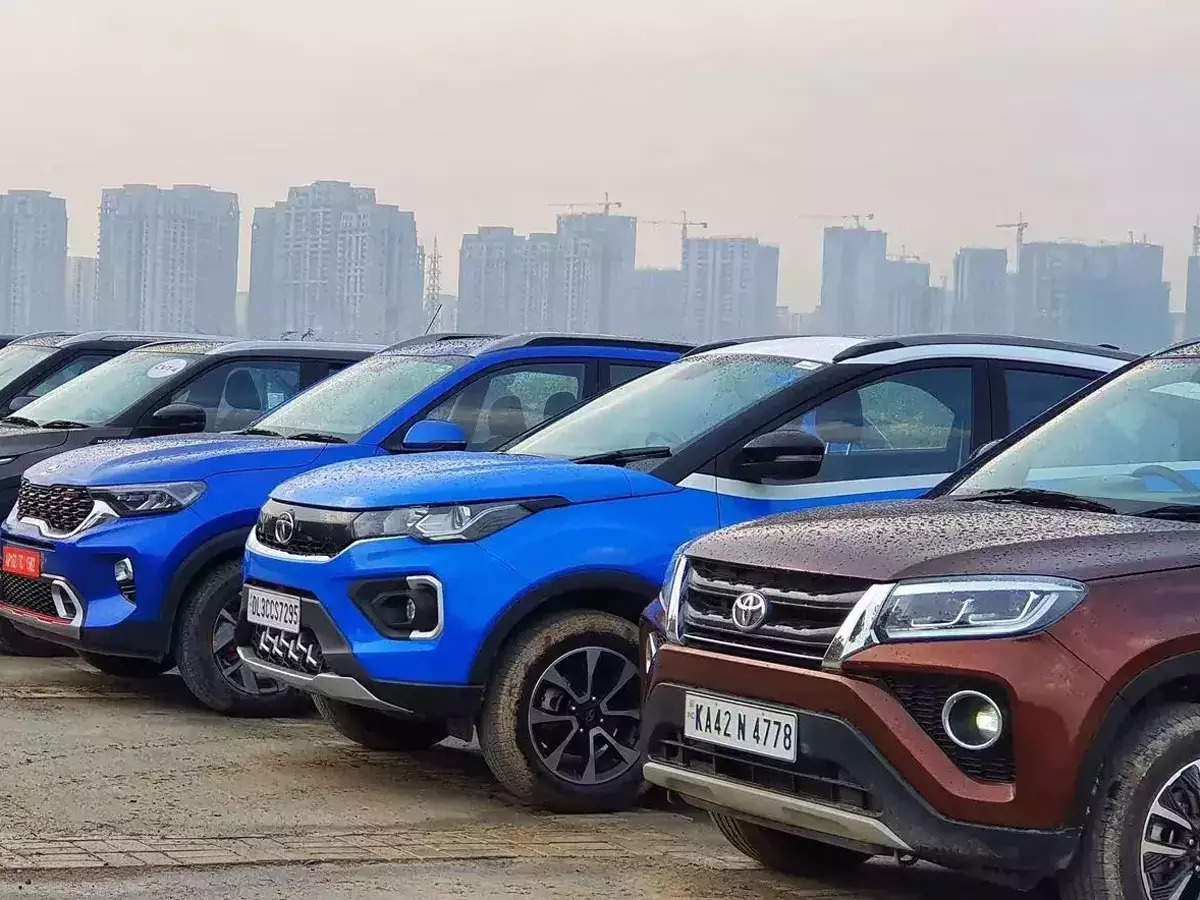That’s because just a third of the 47 models with SUV branding sold in the Indian market have an engine capacity of 1,500 cc and above, a length of 4 metres and more, and ground clearance of 170 mm and higher. Those are the criteria based on which a vehicle is defined as an SUV for the purpose of computing goods and services tax (GST).
Total car sales rose to a record 4.23 million units in the last financial year, up 8.7% from the previous year, with the big-time shift to SUVs – which crossed the 50% market-share mark for the first time in FY24 – having ostensibly underscored the surge.
Going strictly by the GST Council’s definition, SUV sales were 445,556 against the 2.13 million attributed to the segment by carmakers. To be sure, that doesn’t take away from the shift in customer preference toward the SUV silhouette.
Savings on Tax
A more upright, aggressive stance in SUVs and a higher driving position than in sedans are among the factors that appeal to younger, image-conscious Indian buyers. And then, there’s the saving on tax.
India levies GST of 28% on all passenger vehicles, coupled with compensation cess ranging from 1% to 22%. SUVs attract the highest compensation cess of 22%, taking overall levies to 50%.
Industry veterans said SUVs, which were traditionally used for off-roading, have evolved over the years with changing consumer behaviour. But the roughest surface most vehicles branded as SUVs will handle are potholes. Best-selling models in the segment such as the Maruti Suzuki Brezza and the Hyundai Venue do not offer all-wheel drive options, nor do they fit the GST criteria. Nevertheless, they are in high demand and mostly used within city limits.
“Typically, SUVs need to have some off-roading capabilities. Body styling, the length of the wheelbase, the height of the vehicle, all-wheel drive option, and in some cases even the size of the tyres were important parameters to badge a vehicle as an SUV,” said VG Ramakrishnan, managing partner at consultancy firm Avanteum Advisors. “Now the classification has become more generic with changing customer preferences. All SUV-styled vehicles with a higher stance are a part of the segment.”
So, while the Hyundai Creta topped the charts, selling nearly 163,000 units in the mid-SUV segment last fiscal, it does not come with off-roading capabilities. On the other hand, the Maruti Suzuki Jimny and the Mahindra Thar –purebred SUVs with all-wheel drive options –are both small cars with a length of 3,820 mm and 3,895 mm, respectively. And, while the Thar is successful, the Jimny is not.
But Maruti Suzuki’s switch to cars with SUV branding has been resoundingly successful with hits like the Brezza and the Grand Vitara.
“We have seen a segment start with some representative vehicles, and as it becomes larger sub-segments emerge,” said Shashank Srivastava, Maruti Suzuki executive council member, explaining the evolution. “Be it in terms of styling, usage, powertrain capabilities – the customer preference has altered and with that the products on offer in the (SUV) segment.”
There’s been a big shift in the SUV owner profile. About a decade back, larger vehicles with all-terrain capability were sold largely in rural areas, he said.
“Midsize SUVs used to sell 3x of entry SUVs 10 years back,” Srivastava said. “Demand (for SUVs) was strong in rural areas where roads were bad. Diesel was the fuel of choice in the segment because of its pulling power. Most SUVs today are sold in cities, diesel is limited to midsize and premium SUVs. And there is demand for petrol, hybrid and CNG even in this segment.”
In fact, Tata Motors sells SUV-shaped electric vehicles such as the Punch and the Nexon, alongside the much bigger Harrier and Safari.
With sales of 1.11 million units, the entry level SUV segment – Brezza, Venue, Kia Sonet – emerged the largest in the local market last fiscal.


